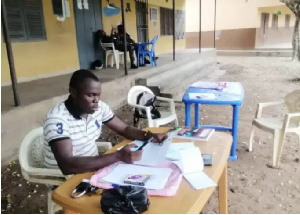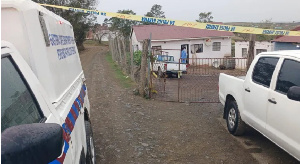- Abaare Reports
- Addi Kujay
- AfricaCNNnews
- Afriyie Kwaku Boachie
- AHAFO
- Alby News Ghana
- ASHANTI
- BONO EAST
- BRONG AHAFO
- Canard Afriq
- Cash In Trash
- CENTRAL
- Cherries
- Club Mate
- Courageous World
- Crest City News
- Current Affairs
- Daily Biz
- DailySpot
- Daniel Kaku
- Da Spicy News
- DC KWAME KWAKYE
- EASTERN
- EBI
- Facts Check
- Gabs Feed
- Ghana News Timeline
- Ghana News Update
- Godblessed1
- GREATER ACCRA
- Great Okocha
- Harry Graphic
- iNews
- Info News Ghana
- King B
- Kofipedia
- Lovely
- Managing GH
- Man Zekay
- Mart News Empire
- Maxkaytheblogger
- Mohammed Zakwan
- MyDailyNews
- Nana Kay News
- News Hub GH
- News Today
- News Zone 360
- Nine 9
- NORTH EAST
- NORTHERN
- ObuabaMedia
- OTI
- Priests News
- Royalnews360
- Sahara Writers
- SAVANNAH
- Simpsons Blog
- Skate News
- Smart News Ghana
- SpinnerWeb
- Teddytheblogger
- Ted News Ghana
- The news
- TheoNews
- Trending Now
- UPPER EAST
- UPPER WEST
- VOLTA
- Wadupgh
- Web Brief
- WESTERN
- WESTERN NORTH
Alby News Ghana Blog of Wednesday, 22 February 2023
Source: Alby News Ghana
Quitely going to the grave: kenyan man who helped overthrow Idd Amin dies

Wycliffe Opaa died after a long struggle with stroke
FRAIL: Wycliffe Opaa being helped to a seat at his Jairosi home when the Star visited him on on September 21, 2021. Image: EMOJONG OSERE
A Kenyan man who played a key role in facilitating activities that led to the ouster of former Ugandan President Idd Amin Dada is dead.
Wycliffe Opaa breathed his last on February 20 at his Jairosi home in Busia’s Teso North sub-county.
He was 82.
Opaa, according to family members died after a long struggle with stroke.
When the Star visited him on September 21, 2021, he looked frail and could not walk on his own as a result of the stroke that had paralysed the left part of his body.
It is then that he revealed to the press how he championed the ‘liberation war’ that overthrew Idd Amin ushering in the regime of current Ugandan President Yoweri Museveni.
Ugandan officials who spoke to the Star in 2021 confirmed Opaa played a critical role in facilitating fighter activities that kicked out Idd Amin who died on August 16, 2003.
Family on Wednesday said Opaa may be laid to rest on Saturday.
HIS ROLE
When members of the press interviewed him on September 21, 2021, the deceased revealed how he facilitated correspondence between Ugandan rebels and the overseas countries that were supportive of the bush war that was led by Museveni.
“They (fighters) used to come here at home. They mostly stayed inside the house for the whole day then at night they would leave and go back to Uganda very early in the morning,” Opaa said during the interview.
“Sometime they would disappear for two to three days before returning.”
Jairosi, the village where his home is located is generally quiet, apart from the areas that border the Malaba-Angurai road where there is noise from traffic.
THEN: Wycliffe Opaa (C) with brother Enos Oteba at his Jairosi home when the Star interviewed him in September 2021. Image: EMOJONG OSERE
Parts of it still have expansive pieces of land which locals said were once bushy and may have provided a perfect hideout for Ugandan fighters then.
During the Star’s visit to the village in 2021, Opaa vividly recalled how cross-border rebel activities were conducted as ouster pressure was mounted by opposing forces against the regime of President Idd Amin after he took over power following a military coup against President Milton Obote on January 25, 1971.
The village overlooking Uganda from the Northern part of Malaba town, locals said, has a rich undocumented revolutionary history.
By the time the rebel invasion began, Opaa had stopped working at Rion Textile Industries in Kawempe, Kampala because of the instability that followed the removal of Obote from power.
He returned home to Kenya only to welcome fighters who would later win the war that catapulted President Museveni to leadership.
“The rebel activities were private that their motive would not be known easily,” Opaa who was once a trade unionist at a shoe-making factory in Uganda said.
“The rebels were very sensitive. When they were around and they sensed danger, they would leave immediately. One of them had a sensor, it was like a watch. Whenever it blinked red, they stopped whatever they were doing and left. I think the red blink meant danger to them.”
Opaa later, through the influence of his brother Right Omong’in joined the rebel group as a messenger.
He said he facilitated correspondence between the fighters and Ugandans who had escaped from the country because of the instability and were supportive of the rebellion.
Opaa said correspondence between the fighters and the outside world when the guerilla fighters were operating in Eastern Uganda was mostly done through him.
INTERVIEWED: Wycliffe Opaa during the interview. Image: EMOJONG OSERE
He facilitated the posting of letters out of and into Uganda through a Post Office in Western Kenya, he said.
The transportation of revolutionary literature was particularly done at night, he said.
Some of the revolutionary books which were not delivered to Uganda, he added, were either burnt at their Jairosi home or were buried in a pit latrine.
His younger brother Enos Oteba who by then was 25 years old said his naivety denied him the opportunity to know the mission of the men who were hosted at their home.
“They (Ugandan fighters) used to come here but we never understood their mission. The only person I knew was Omong’in because he was my cousin. Most of the fighters were very young. They spoke less. Only Omong’in spoke to us most of the time,” Oteba said.
Omong’in was from Soroti in Eastern Uganda but had a house in the bushy Kataboi area along river Malaba from where he operated with other rebels, Oteba said.
BROTHERS RECRUITED
Oteba said Omong’in while at their home at one time told them he wanted to recruit youth to be employed in a neighbouring country.
He said his cousin did not reveal the jobs that were available in the East African country.
The recruitment call came after some of the fighters had left Jairosi for the East African country where rebels launched an attack on Uganda in 1972 in an attempt to topple Idd Amin from power.
“Omong’in said he was looking for youth to take to the neighbouring country because there were employment opportunities there. He did not tell us they were going to fight. The only thing he said was they were going to work,” he said.
In the process, Oteba’s two brothers – James Oteba and Laban Epili – left with Omong’in for the neighbouring country.
PART OF FAMILY: Wycliffe Opaa's brother Enos Oteba. Image: EMOJONG OSERE
They are said to have travelled through Kisumu before boarding an engine boat to Tanzania where they joined other fighters who had been recruited into rebellion.
In September 1972, through the orders of Obote who was exiled in Tanzania, insurgents launched an attack on Southern and Western Uganda with limited help from Tanzanian forces.
The rebel forces primarily constituted the People’s Army whose personnel were Obote loyalists but also included guerillas who were led by Museveni.
Two Kenyans, James Oteba and Laban Epili, according to Enos Oteba and Opaa are said to have been part of the group that launched the attack on Uganda in 1972 through Western Uganda. Museveni led the Western Uganda faction.
The rebels were however repulsed due to inadequate fighting tactics and the outdated nature of the weaponry they were armed with.
Over 100, insurgents in the group are said to have been killed. Several others during the fighting were captured and executed.
Opaa survived the attack that claimed his colleagues and returned to Kenya where he continued to support the rebellion from Jairosi.
Uganda's National Resistance Movement Chairman for Mela Sub-county Abou Akileng' told the Star that his office had received complaints from Opaa’s family in Kenya seeking compensation from the Ugandan government.
Museveni is the National Resistance Movement party leader.
Akileng' said his office had tried to invest efforts in making sure the Kenyan families are helped.
At the time he spoke to the Star in 2021, he said he would liaise with the office of the Resident District Commissioner in Tororo to find ways through which the President will receive information about the predicament of the Jairosi families.
RECOUNTED: Virginia Atieng’, 87, a neighbour to Opaa also recounted activities of the time when fighting broke out in Uganda. Image: EMOJONG OSERE
He said his office will follow up and make sure the families are helped.
“It is true I have received a letter from a chief in Kenya indicating that some people who joined the liberation movement of the president of Uganda never came back since they went with the President," Abu said.
“Their families were requesting if at all they could be recognised the way the President recognised the Ugandan people. What disturbed my understanding is that people on the Ugandan side of the border were recognised after being helped to build houses and their children were taken to school by the President.”











